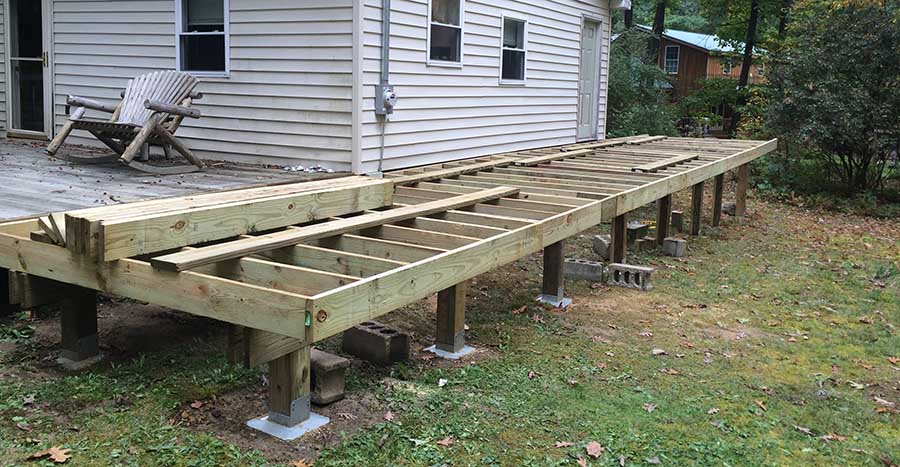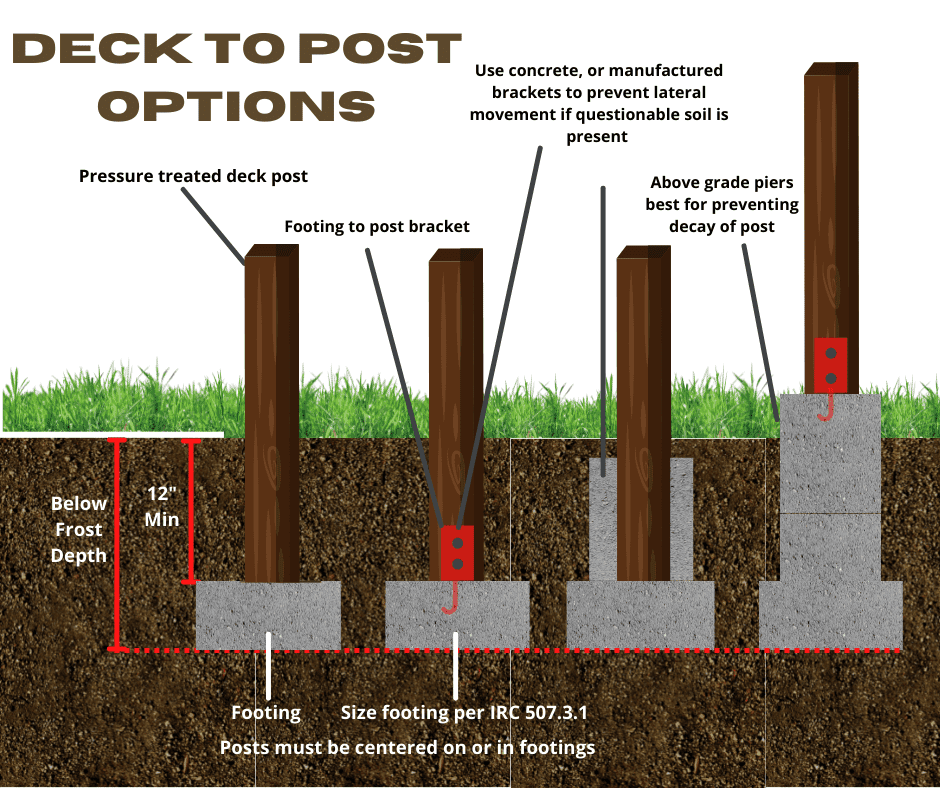Step Up Your Deck Game: Every Little Thing You Required to Know About Deck Footings
Building a Solid Foundation: Unveiling the Keys of Deck Ground
A strong and properly designed deck footing is essential for the stability and durability of any kind of deck framework. In this informative overview, entitled "Building a Solid Foundation: Revealing the Secrets of Deck Footing," we will discover the relevance of appropriate footings, the different kinds readily available, and the aspects to take into consideration when selecting the appropriate ones for your deck job. We will certainly discuss the relevance of regular upkeep and assessment to ensure the continued safety and security and sturdiness of your deck grounds.
Relevance of Appropriate Footings

One of the key factors why proper grounds are critical is to stop the deck from changing or sinking. Grounds that are not deep sufficient or are badly constructed can create the deck to resolve unevenly or move with time. This can result in an uneven deck surface, triggering a stumbling danger and compromising the architectural honesty of the whole deck.

In addition, proper grounds additionally assist to protect the deck from moisture damage. By raising the deck framework above the ground, footings protect against the timber from entering into direct call with moisture, minimizing the threat of rot and degeneration.
Sorts Of Deck Footings
The selection of appropriate deck footings is a vital aspect in guaranteeing the stability and long life of a deck framework. There are a number of kinds of deck grounds that can be made use of, each with its own benefits and factors to consider.
One usual kind of deck footing is the concrete pier footing. This entails digging openings in the ground and putting concrete to produce a strong structure for the deck. Concrete piers are functional and can be utilized in a range of soil problems, making them a preferred choice for many deck tasks.
One more choice is the helical pier footing. This kind of footing includes a steel shaft with helical plates that are screwed right into the ground. Helical piers are suitable for areas with bad soil conditions or locations prone to high water tables. They offer outstanding stability and can be adapted to the desired height.
For decks improved shallow or flat foundations, a shallow footing might be appropriate. Shallow grounds are usually made from concrete and are positioned directly on the ground surface area. They are best matched for smaller sized decks or locations with stable soil conditions.
Elements to Think About When Selecting Footings
When choosing grounds for a deck, it is vital to thoroughly consider several elements that will inevitably identify the security and sturdiness of the structure. Bigger decks with multiple levels or hefty tons require even more substantial grounds to supply sufficient support. By carefully considering these variables, home owners can make enlightened decisions when choosing grounds for their deck, making sure a stable and long lasting framework.
Steps to Prepare and Set Up Footings
To prepare and mount grounds for a deck, it is crucial to follow a methodical technique that guarantees security and durability. The first step is to figure out the size and variety of footings required based on the deck style and regional structure codes. It is necessary to dig deep into the soil to the called for depth, making certain that all-time low of the footing visit this site relaxes on uninterrupted dirt or compacted gravel. The following step involves positioning a concrete kind tube or footing kind in the opening, making sure it is degree and. The form needs to expand above the ground level to stop water damage. Afterwards, enhancing steel bars, or rebar, are placed inside the form to provide added toughness. The rebar must be effectively protected and spaced according to the design requirements. Once the kind and rebar remain in location, concrete can be poured into the form, filling it to the top. The concrete must be consolidated and smoothed making use of a shovel or a concrete vibe. The concrete demands to cure for the suggested duration prior to any additional building and construction takes area. By complying with these steps diligently, one can ensure that the footings are appropriately prepared and installed, providing a strong structure for the deck structure.
Upkeep and Evaluation of Deck Footings
To make sure the long-term security and security of your deck, routine upkeep and comprehensive examinations of the deck grounds are important. The deck footings function as the foundation of your deck, sustaining the weight and tons of the whole structure. Over time, these footings can experience wear and tear as a result of various aspects such as weather, soil motion, and the natural aging process. It is essential to execute regular upkeep to determine any kind of possible issues and resolve them promptly.
Regular upkeep must include visual examinations of the footings, looking for indicators of damage or deterioration. These can consist of fractures, shifting or sinking of the footings, or signs of water damages. Furthermore, it is important to check the stability of the grounds by using pressure or performing load tests if necessary.
In addition to aesthetic assessments, it is advised to schedule specialist inspections every couple of years. Specialists can evaluate the architectural stability of the grounds extra precisely and supply skilled suggestions on browse around this web-site any needed repairs or replacements.
Furthermore, appropriate maintenance also entails taking safety nets to safeguard the footings (Deck Footings). This can consist of applying water-proof coatings to stop water damage, ensuring correct drainage to prevent excessive moisture, and regular cleansing to remove debris and prevent buildup
Verdict
To conclude, correct deck footings play an essential duty in guaranteeing the stability and durability of a deck. By understanding the different sorts of grounds offered and taking into consideration variables such as soil problems and regional building ordinance, homeowners can make informed decisions when selecting grounds for their deck. Furthermore, normal upkeep and assessment of deck footings is important to recognize any kind of prospective problems and ensure the safety of the framework.
In this useful overview, titled "Structure a Strong Structure: Introducing the Secrets of Deck Ground," we will certainly discover the relevance of appropriate footings, the different types offered, and the variables to take into consideration when choosing the appropriate ones for your deck project.One usual kind of deck footing is the concrete pier footing.To make certain the lasting stability and safety and security of your deck, normal upkeep and comprehensive evaluations of the deck footings are important.In conclusion, correct deck grounds play a critical function in making sure the security and durability of a deck. By understanding the various kinds of grounds readily available and taking into consideration elements such as dirt problems and regional building codes, property owners can make informed decisions when redirected here selecting footings for their deck.